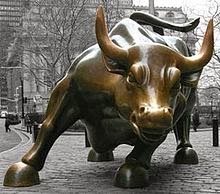 Marketers are starting to realize that Brand Advocates are important enough to be part of our marketing strategies… but in my view, we need to take this beyond our Advocates just being “a part” of what we do. We need to value our Advocates enough to promote them – in both meanings of the word: to bring visibility to, and to raise up.
Marketers are starting to realize that Brand Advocates are important enough to be part of our marketing strategies… but in my view, we need to take this beyond our Advocates just being “a part” of what we do. We need to value our Advocates enough to promote them – in both meanings of the word: to bring visibility to, and to raise up.
A ll Posts
POP psychology of Social Sampling
 Recently, I was offered a box of #popchips from a twitter friend of mine who – apparently – was considered a key Toronto influencer according to Klout. At first I actually thought it was a hoax, but much to my surprise I received the box of perfectly “popped” chips and they were, as promised, quite delicious.
Recently, I was offered a box of #popchips from a twitter friend of mine who – apparently – was considered a key Toronto influencer according to Klout. At first I actually thought it was a hoax, but much to my surprise I received the box of perfectly “popped” chips and they were, as promised, quite delicious.
Now, I’m not writing this post to describe or define whether or not popchips were a good snack (though they were). No; rather, I’m writing to talk about how the popchips brand easily and smartly tapped into the psychology of status – and it worked!
As I’ve previously mentioned: the psychology of status – a concept originally coined by Herbert Hyman in 1942 – explains that people use groups of reference to determine their rank in status, as well as to determine a point of reference for where they would like to see their status go.
The Nature of Situational Influence
 In 1610 Galileo, now considered the father of modern science and observational astronomy, began to publicly support the belief that the sun, not the earth, was the center of our universe. His heliocentric beliefs met with bitter opposition from his peers and the church who condemned him as a heretic. It was no coincidence, as it has always been, that those who benefit most from the status quo prove to be the most resistant to any kind of opposing thought, no matter how much sense it makes.
In 1610 Galileo, now considered the father of modern science and observational astronomy, began to publicly support the belief that the sun, not the earth, was the center of our universe. His heliocentric beliefs met with bitter opposition from his peers and the church who condemned him as a heretic. It was no coincidence, as it has always been, that those who benefit most from the status quo prove to be the most resistant to any kind of opposing thought, no matter how much sense it makes.
After a year of exploring the nature of influence, I firmly believe I am now, and have always been, inconsequential. That being said I also believe, like Galileo did about the sun and earth, that our view of influence is strongly based on the beliefs of those that benefit from it the most. This current self-centered view of influence puts man/woman as the center of the influence universe – a view I do not share and believe to be the exact opposite of the truth; a truth many would consider heresy.
The Fifth Model “Crowdsourcing” Hits Madison Avenue
The Rise of Crowdsourcing
 In the era of seismic change now occurring on Madison Avenue, ad agencies are starting to strap on an extra seat belt. There is a lot of talk about revamping traditional ad agency models, e.g., digital, hybrid, tradigital or simply, creation of the “new agency”. Traditional agencies are pushed to their limits by the explosion of digital and social media marketing projects as clients demand greater expertise. Agency compensation models fortified with high overhead are under pressure since it isn’t easy for a large agency to monetize the creation of a Twitter background page or Facebook fan page. This leads us to the need for a compensation model that reflects activity-based pricing delivered more efficiently. For new ad agency start-ups, the answer may be what we call the “Fifth Model”. This is another step in the long evolution of ad agencies adapting to changing market conditions for well over 100 years.
In the era of seismic change now occurring on Madison Avenue, ad agencies are starting to strap on an extra seat belt. There is a lot of talk about revamping traditional ad agency models, e.g., digital, hybrid, tradigital or simply, creation of the “new agency”. Traditional agencies are pushed to their limits by the explosion of digital and social media marketing projects as clients demand greater expertise. Agency compensation models fortified with high overhead are under pressure since it isn’t easy for a large agency to monetize the creation of a Twitter background page or Facebook fan page. This leads us to the need for a compensation model that reflects activity-based pricing delivered more efficiently. For new ad agency start-ups, the answer may be what we call the “Fifth Model”. This is another step in the long evolution of ad agencies adapting to changing market conditions for well over 100 years.
The “Fifth Model” Recognizes the Value of Social Media Marketing
Marketers can connect with customers using social media more efficiently vs. outbound marketing tactics. For example, downloading a digital coupon for a free taco may not only cure one’s short term hunger but, for the marketer, it is a viable reward for loyal customers and drives traffic at a price far less than traditional ads. Even when the value of the free taco fades, a smart marketer now understands the importance of engaging customers. Armed with a social media strategy, many brands now understand the drill: listen, engage, feedback, analysis = win.
The game theory of discovery and the birth of the free-gap
It all started because of the discovery problem.
Too many things to choose from, more every day. No efficient way to alert the world about your service, your music, your book. How about giving it away to help the idea spread?
The simplest old school examples are radio (songs to hear for free, in in the hope that someone will buy them) and Oprah (give away all the secrets in your book in the hope that many will buy.)
There’s a line out the door of people eager to spread their ideas, because in a crowded marketplace, being ignored is the same as failure.
Most people, most of the time, don’t buy things if there’s a free substitute available. A hundred million people hear a pop song on the radio and less than 1 percent will buy a copy. Millions will walk by a painting in a museum, but very few have prints, posters or even inexpensive original art in their homes. (In the former case, the purchased music is better–quality and convenience–than the free version, in the latter, the print is merely more accessible, but the math is the same–lots of visits, not a lot of conversion).
The importance of brand “appeal”
 More and more, I like the word “appeal” and its implications for marketing and facilitating the building of relationships.
More and more, I like the word “appeal” and its implications for marketing and facilitating the building of relationships.
The definition of “appeal” (according to the World English Dictionary) is “the power to attract, please, stimulate, or interest.” So, if we apply that to marketing, it means thatbrands that think in terms of “appeal” are more likely to try to attract, please, stimulate, and provide interest for the consumer — all behaviors of engagement, which is the foundation of relationships.
Using Twitter for Marketing and PR: Do the Pros Practice What They Preach?
It seems that everyone claims to be a Twitter expert these days. Of course, most are not. But several of the real Twitter pros I know—including those who have written books about using Twitter as an effective marketing and public relations instrument—have figured out how to best leverage the 140-character microblogging tool to promote themselves, their books, their firms, and their clients. And some of them actually follow their own advice!
How Smart Marketing Book Authors Use Twitter
 For example, Mark Schaefer of Schaefer Marketing Solutions is the author of the book The Tao of Twitter: Changing Your Life and Business 140 Characters at a Time. He and his firm provide affordable outsourced marketing support to address both short-term sales opportunities and long-term strategic renewal.
For example, Mark Schaefer of Schaefer Marketing Solutions is the author of the book The Tao of Twitter: Changing Your Life and Business 140 Characters at a Time. He and his firm provide affordable outsourced marketing support to address both short-term sales opportunities and long-term strategic renewal.
Mark uses Twitter to help deliver on that promise for a number of his blue-chip clients, including Nestle, AARP, Anheuser-Busch, Coldwell Banker, Scripps Networks, Keystone Foods, and the U.K. government. He also very effectively promotes himself and his book on Twitter as part of his own marketing, branding, and relationship-development strategy.
Courage and minimalism: A new view to focus on your target
 Courage. Now, there’s a word not often used in marketing – though often used in business. We call leaders courageous when they make unpopular decisions, usually internally, that change process significantly enough to create a turnaround. Perhaps to drive costs down, perhaps to drive morale up – but always to make a significant change. In marketing, in my humble opinion, courage is the ability to very clearly identify, select and stick with a target audience.
Courage. Now, there’s a word not often used in marketing – though often used in business. We call leaders courageous when they make unpopular decisions, usually internally, that change process significantly enough to create a turnaround. Perhaps to drive costs down, perhaps to drive morale up – but always to make a significant change. In marketing, in my humble opinion, courage is the ability to very clearly identify, select and stick with a target audience.
I believe those (marketers) who are most courageous are the ones who dare to dabble in the psychology of status – a concept first introduced by Herbert Hyman (1918-1985) in 1942. The premise of the psychology of status is that individuals use groups of reference to evaluate aspects of their lives – both positively and negatively.
Two Big Lessons from Morgan Stanley’s Social Media Investment
{EAV_BLOG_VER:5a4e428e63e811c2}

1. Tell Your Story in Social Media or Someone Else Will
Wall Street brokerage powerhouse, Morgan Stanley, made a bold investment decision: within the year, all of its 17,800 financial advisors will be tweeting on Twitter and connecting on LinkedIn. Bullish on Social Media, its head of U.S. sales, Andy Saperstein, proclaimed:
MSSB is committed to continue leading our competition in innovation. This will be a significant competitive advantage.
So where did Morgan Stanley break this bold announcement? Well, ah, it didn’t….That announcement came in an internal memo that was leaked to the press and whizzed through the corridors of social media until Morgan Stanley finally acknowledged that the memo was genuine. Social media moves in real time. Not having a presence in social media assures that you will be chasing the story rather than telling it.
The Power of Strategic Social Media Marketing
As business storytellers, we have spent the last three years watching, learning, and immersing ourselves in new media. The digital evolution yields immense value in audience reach, messaging power for B2B and B2C companies, and in accessibility to customers and information. The number of participants engaged on Facebook, Twitter, and YouTube demand a company’s attention.
How to harness the power of these channels is the key marketing question. In much the same way we begin every marketing initiative, we start with the end zone—what’s the goal and how will we reach it? For our clients, Return on Investment is answered in the larger context of strategic marketing and public relations; social media is not a stand-alone marketing channel with a disparate ROI.